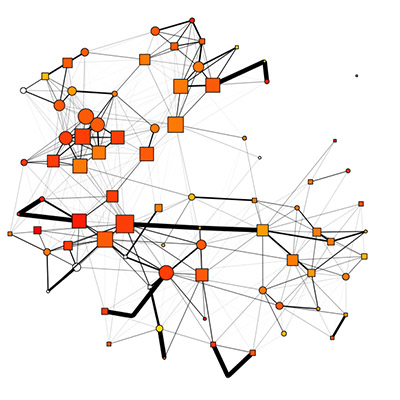
Microbial transmission ecology
Most gut microbes are gut specialists, acquired from other animals via the faecal-oral route. However, the transmission ecology of gut microbial symbionts in nature remains poorly understood. What kinds of interactions promote the sharing of gut microbes? How important are intimate host social interactions in symbiont transmission? Can we predict which microbes rely on different transmission routes, from their biological characteristics? We are currently tackling these questions by characterising how host social networks and patterns of relatedness predict the sharing of gut microbial species and strains among wild wood mice, shored up with experiments in captivity to support causal inference.
Social network of wild Apodemus spp. mice

Social network of wild Apodemus spp. mice. Nodes represent individual mice, and edges represent interaction strength (how often two mice were observed together at the same RFID logger on the same night).